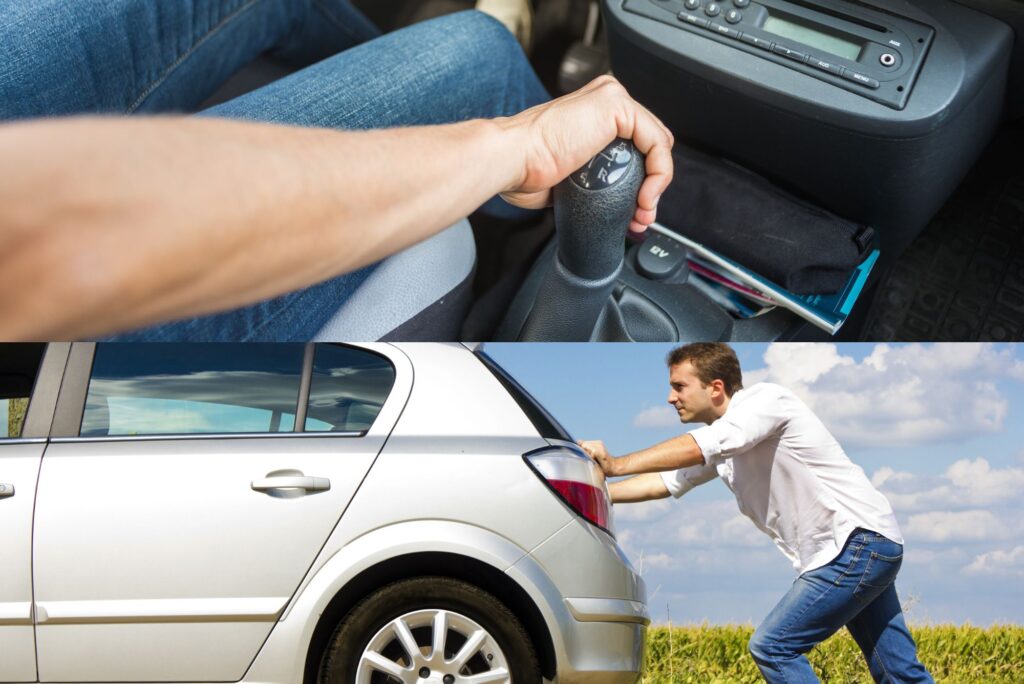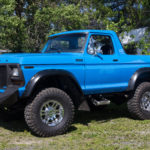It isn’t uncommon for vehicles to have starting issues—especially as they age. Vehicle starting issues can be caused by a flat battery or a failed starter. You can only use the roll start trick if the starter is not turning. This trick wouldn’t work on a dead battery because your vehicle will need power for your computer, fuel system, and sensors.
Simply turn on the ignition to start your vehicle, if nothing really happens—that means your starter isn’t turning. If the roll start trick is unfamiliar to you or you’d want to know more about how it works, you’re reading the right article.
What Is a Roll Start and How Does It Work?
Roll start is a trick where an assistant pushes the vehicle while you turn the ignition to the run position. Once the vehicle is moving, you’ll have to make sure that it’s in first gear. If you’re going backwards, make sure that it’s in reverse. Quickly release the clutch pedal. This method is also known as push starting, clutch popping, and bump starting.
Once the vehicle is moving, you’ll have to make sure that it’s in first gear. If you’re going backwards, make sure that it’s in reverse. Quickly release the clutch pedal.
–Anthony Harlin, ASE Certified Master Automobile Technician
In a rolling start, you use the rotation of the wheels to gain momentum and start the engine. It usually works for manual transmission vehicles.

The ignition can stay on in a roll start. You’ll have to have the clutch pedal to the floor then immediately release it. You’ll have to make sure that transmission is in gear.
You can do this trick solo if you’re on a steep hill because you wouldn’t need anyone to push the vehicle for you.
Is It Safe to Bump Start a Car?
It’s safe to roll start your vehicle as long as you do it correctly. Note, however, that this method only applies to manual transmission vehicles.
Bump starting won’t work with a vehicle equipped with automatic transmission, as it would only damage the gearbox and transmission.
Why Roll Starting Won’t Work for Vehicles With Automatic Transmission
Here are two of the major reasons why you can’t push start an automatic transmission vehicle:
Stress on the Transmission
Automatic transmission vehicles have open clutches, which makes them impossible to roll start.
An open clutch system enables the wheels to spin freely when you push your car. That means the engine can disengage from the drivetrain, so the movement of the wheels when you push your vehicle won’t be able to power your engine.
Roll starting a vehicle with an automatic transmission would only damage it, as it forces the transmission to engage.

Torque Converter Damage
Automatic transmission vehicles have torque converters that transfer torque from the engine to the wheels. This fluid coupling is filled with hydraulic fluid that doesn’t circulate when the engine is off. In short, the engine wouldn’t start if the transmission doesn’t receive power.
What to Watch for When Roll Starting
Roll starting is an effective way to start a manual transmission vehicle, but you have to be careful when doing it. Here are some of the things to watch out for when roll starting your ride:
Road Accidents
You can roll start solo while on a steep hill, but it’s still safer to have an assistant with you. It’s hard to keep an eye on your surroundings if you do it alone. You might end up in a minor collision once your engine gains speed.
Make sure that there are no obstructions on the road when roll starting. Watch out for incoming vehicles and pedestrians if you’re roll starting in a busy area.
Losing Control of Your Vehicle
If you’re roll starting on a hill, make sure its level of steepness is ideal for the method. If it’s too steep, you might lose control of your ride if the engine doesn’t start.
If you’re not confident you can roll start your vehicle, you can always have your ride towed to the nearest auto repair shop.
What Works for Automatic Transmission Vehicles?
If you’re driving an automatic transmission vehicle, you can try jump-starting it. However, remember that this trick only works if you have a dead battery.

Jump-starting involves using jumper cables and a high-current battery to power your car’s battery. It takes 5-30 minutes to do it.
Why Won’t My Engine Start After a Roll Start?
If roll starting doesn’t work, then the problem might not be a dead battery or a failed starter.
Many engine problems can cause a “no-start” condition, like clogged or restricted fuel lines. Although rare, a problem with the vehicle’s powertrain control module (PCM) can also cause a starting problem.
What to Do When Roll Starting Doesn’t Work
Here are your best options if your car really won’t start after roll starting:
Contact Roadside Assistance Services
Contact a friend or better yet—call a roadside assistance service. This type of service costs around $20 to $50. You’d have to shell out additional money, but it pays to let trained professionals help you.
Roadside services can do everything from jump-starting your car and replacing a flat tire to refilling your gas tank.
Call Your Mechanic
If you’re lucky enough to still be near your house or at your garage when your battery dies, you can contact your mechanic, who can confirm what caused the issue.
If you want to save on the service fee, you can look for the signs of a weak battery to determine if yours need replacement.
How to Get a New Battery for Your Vehicle
Unfortunately, roll starting won’t always work. At some point, your flat battery will die, leaving you stranded with a vehicle that won’t start. The good news is that you can easily avoid this hassle by replacing your car battery. Luckily, getting a brand-new battery is fast and easy with CarParts.com.
CarParts.com offers a wide selection of high-quality batteries that are sourced from only the most trusted manufacturers in the industry. With the help of our vehicle selector and search filters, you can easily browse through all the available batteries that are compatible with your ride. CarParts.com also guarantees fast shipping, so you don’t have to worry about waiting too long. Order by 12 p.m. ET, and you can expect your new battery to arrive in as fast as two business days.
Don’t wait until your car battery dies before replacing it. Check out our selection of high-quality batteries at CarParts.com and order today!
Any information provided on this Website is for informational purposes only and is not intended to replace consultation with a professional mechanic. The accuracy and timeliness of the information may change from the time of publication.


















